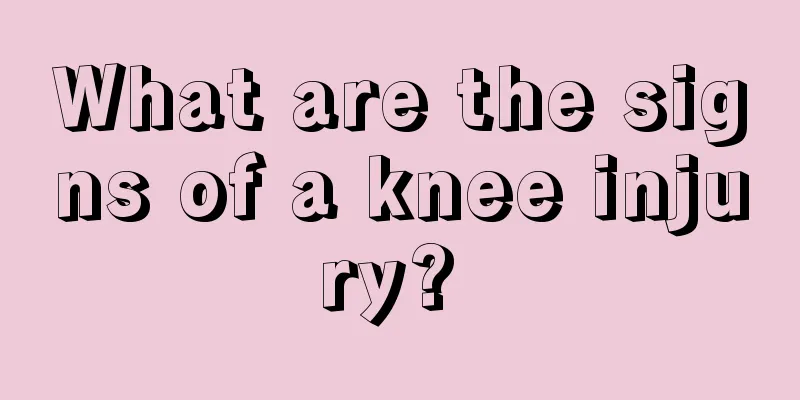What are the signs of a knee injury?

|
Because people nowadays run and jump all the time, and often do not pay attention to exercise, or do not do warm-up exercises during activities, it is easy to cause knee injuries. Once the knee joint is injured, it is necessary to determine whether there is a history of chronic disease, or whether there has been a knee disease before. In addition, in the diagnosis of symptoms, it is usually accompanied by severe joint pain, local bruising, congestion, and local redness and swelling. Symptoms and signs 1. Only some acute injury cases have a history of trauma, while chronic injury cases have no clear history of trauma. 2. It is more common in athletes and manual laborers, and more common in men than in women. 3. After the injury, the knee joint is extremely painful and cannot be straightened. Swelling occurs rapidly and there is blood accumulation in the joint. 4. After the acute phase, the disease enters the chronic phase. At this time, the swelling is no longer obvious and the joint function has also recovered, but the joint pain is always felt and there is a popping sound when moving. Sometimes, when moving, you suddenly hear a "click" sound and the joint cannot be straightened. After enduring the pain and swinging the calf a few times, you hear a "click" sound again and the joint can be straightened again. This phenomenon is called joint locking, which can occur occasionally or frequently. Frequent attacks of locking affect daily life and exercise. 5. The signs of the chronic stage include joint space tenderness, bouncing, knee flexion contracture and weakness of the vastus medialis muscle. The tenderness point can be detected by palpating along the joint space. According to the location of the tenderness point, it can be roughly determined whether it is a tear of the anterior horn, body or posterior horn. The horizontal splitting of the anterior horn can be seen bouncing at the knee socket when the knee joint is flexed and extended. The knee flexion contracture side indicates that the meniscus is embedded under the femoral condyle and is difficult to unlock for a long time. The atrophy of the vastus medialis muscle is disuse. This sign indicates that the internal function of the knee joint is disordered. |
<<: What are some effective pain relief methods for gallstones?
Recommend
The harm of washing your hair with ginger juice
Ginger is a common kitchen condiment in our lives...
Classification of antibiotics
Antibiotics are widely used in medicine, the most...
Three very important brain cancer care methods
After suffering from brain cancer, many parts of ...
What medicine can relieve the pain of advanced lung cancer
What medicine can relieve the pain in the late st...
What causes high blood sugar and high urine protein?
Suffering from high blood sugar can easily lead t...
How can liver cancer be treated in the early stage to have a chance of recovery? You can choose these four treatments
Patients with early-stage liver cancer can genera...
The psychology of boys growing long nails
Sometimes we find that many boys have long nails....
What is the treatment for joint cysts
You may be unfamiliar with joint cysts, but I bel...
What are the causes of occult blood in urine?
Many friends may not understand what urine occult...
What are the common early symptoms of lung cancer? 4 common early symptoms of lung cancer
Lung cancer is difficult to treat. The key is tha...
What is the reason for pimples on the eyelids
The possibility of getting a sore throat can occu...
What are the complications of kidney cancer?
What are the complications of late-stage renal ca...
Symptoms of lymphadenitis
Lymph is a very important organ in our body. It i...
The efficacy and function of oyster shell
After eating oysters, a very hard shell will be l...
Five early symptoms of nasopharyngeal carcinoma
Nasopharyngeal cancer is often difficult to detec...









